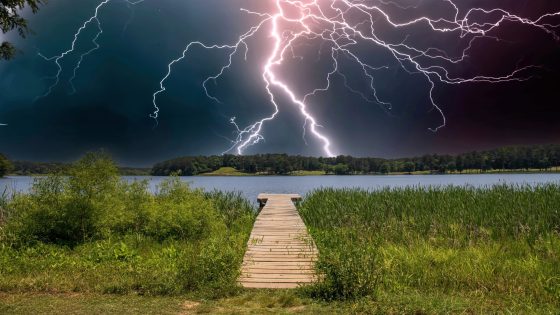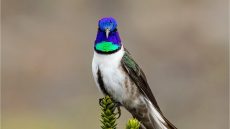Did you know that some trees actually benefit from getting struck by lightning? A recent study reveals that in Panama’s tropical forests, certain trees thrive after lightning strikes. This surprising discovery challenges our perception of lightning as merely destructive.
- Lightning can benefit certain tree species.
- Dipteryx trees thrive after lightning strikes.
- Lightning clears surrounding competition effectively.
- Strikes reduce parasitic vine infestations significantly.
- Some trees are more likely to be struck.
- Lightning enhances reproductive success in trees.
On March 27, 2025, researchers led by Evan Gora found that Dipteryx trees not only survive lightning but also grow stronger, reshaping our understanding of forest ecology. How can a force so powerful be a lifeline for some trees?
How Lightning Strikes Can Help Trees Thrive in Tropical Forests
What if lightning wasn’t just a threat to trees but a beneficial force? Researchers have uncovered that Dipteryx trees in Panama not only withstand lightning strikes but actually use them to their advantage. This revelation could change how we view lightning’s role in forest ecosystems.
Understanding the Benefits of Lightning Strikes for Certain Tree Species
In a groundbreaking study, scientists tracked the impact of lightning on Dipteryx trees, revealing that these trees thrive after being struck. Here’s what they found:
- Dipteryx trees survived lightning strikes with minimal damage.
- Surrounding trees often perished, giving Dipteryx more space to grow.
- Lightning reduced parasitic vine infestations, allowing for better nutrient access.
- These trees grew taller and produced more offspring after strikes.
Why Some Trees Are More Likely to Get Struck by Lightning
Dipteryx trees are often taller and wider than their neighbors, making them more likely to be hit by lightning. Their shape acts like a natural lightning rod, which may seem risky but actually provides them with a competitive edge. This unique adaptation helps them thrive in dense tropical forests.
The Ecological Role of Lightning in Forest Health
Lightning is not just a destructive force; it plays a vital role in maintaining forest health. By clearing out weaker trees and reducing parasitic vines, lightning helps strong species like Dipteryx flourish. This dynamic could reshape forest biodiversity, especially as climate change increases lightning frequency.
Understanding how lightning affects tree survival is crucial for managing forest ecosystems. As we learn more, we can better protect these vital habitats and ensure their resilience against changing environmental conditions.

































